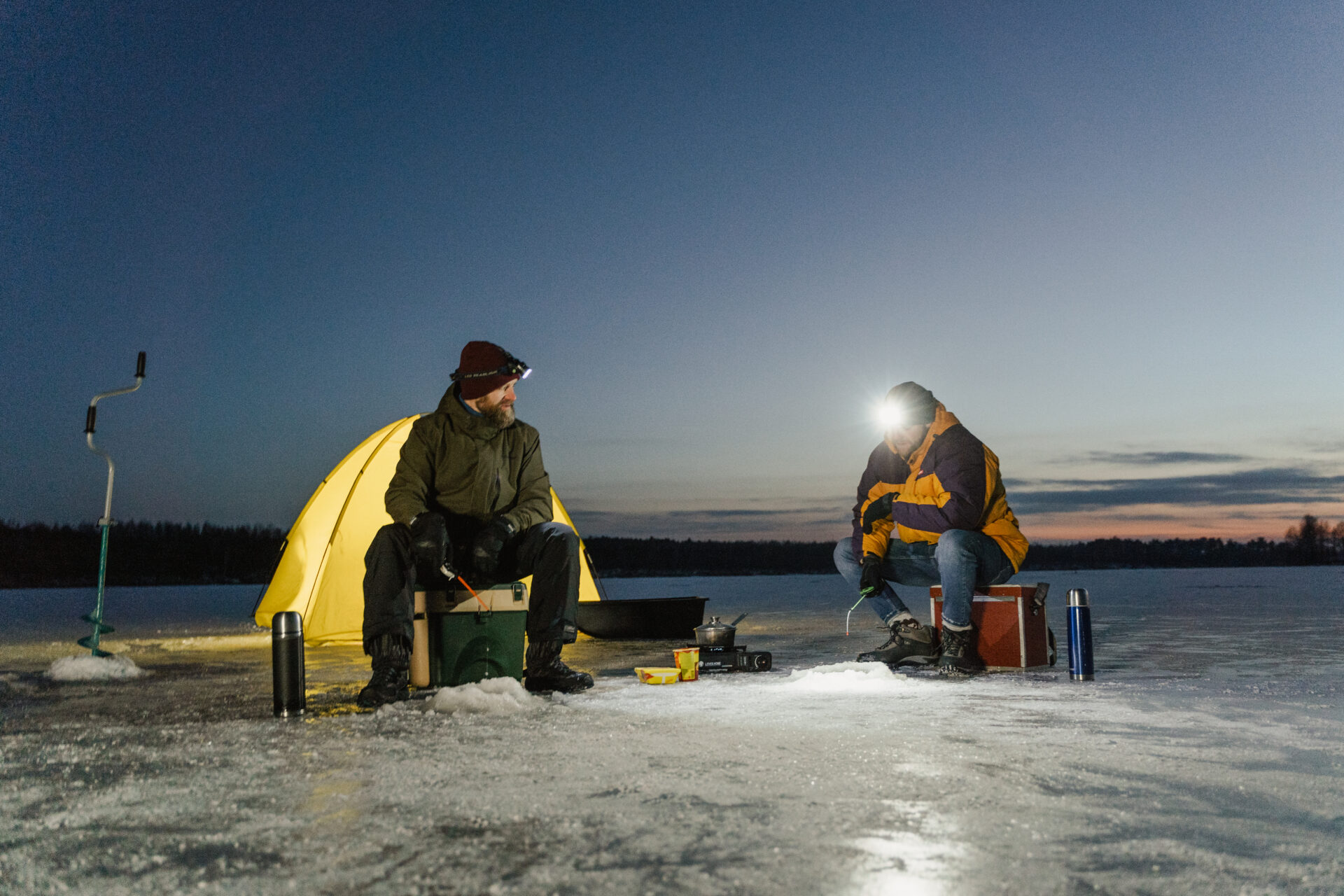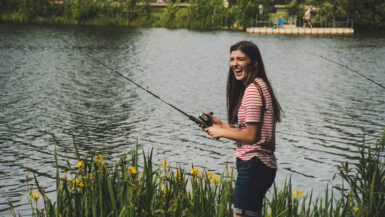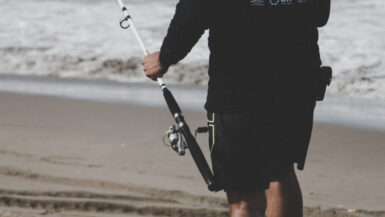Fishing is a beloved pastime enjoyed by people of all ages. Whether you’re a novice or an experienced angler, having the right tackle box essentials will make your freshwater fishing trips more enjoyable and successful. Having the right equipment and supplies on hand will ensure that you’re well prepared for any situation on the water. In this article, we’ll explain the important tackle box essentials that you should include for freshwater fishing trips.
Types of Tackle Boxes
When it comes to freshwater fishing, having the right tackle box is essential for success. Tackle boxes come in a variety of types, shapes, sizes and materials so anglers can find one most suited to their needs and their style of fishing. Popular types of tackle boxes include plastic, metal, mesh, fabric and wooden ones. Some tackle boxes have lids, while others have drawers, shelves or trays.
Plastic Tackle Boxes
Plastic tackle boxes are ideal for freshwater anglers who do their fishing from a boat or the shore. Plastic tackle boxes are affordable, lightweight and waterproof, making them conveniently portable. They are also available in a variety of shapes and sizes, so anglers can easily find the right size to store their lures, hooks, line and other accessories.
Metal Tackle Boxes
Metal tackle boxes are also popular with freshwater anglers. These boxes are usually made of aluminum and have a smooth, lightweight finish. They are usually equipped with drawers and shelves, making them a good choice for anglers who like to keep their tackle organized and easily accessible. They are also waterproof, so they are a great choice for anglers who may be fishing in wet conditions.
Mesh Tackle Boxes
Mesh tackle boxes are made from a durable mesh fabric that can easily store a variety of items. They are ideal for anglers who need a lightweight and portable tackle box. The mesh fabric makes it easy to see what items are stored inside, and it’s also waterproof, so anglers don’t have to worry about their tackle getting wet.
Fabric Tackle Boxes
Fabric tackle boxes are made from a strong, durable canvas material. They are lightweight and can be folded up for easy storage. They are also waterproof, so items stored inside stay dry and organized. Many fabric tackle boxes come with adjustable dividers and pockets, making them great for storing lures, hooks, line and other small items.
Wooden Tackle Boxes
Wooden tackle boxes are a classic choice for freshwater fishing. They are usually made from solid wood and have a wooden latch and hinges. They are a popular choice among anglers who prefer a more natural, traditional look. Wooden tackle boxes usually have drawers, shelves and trays, so anglers can keep their tackle organized and accessible.
No matter what type of tackle box an angler chooses for freshwater fishing, it should be equipped with the right items for a successful day of fishing. From hooks and lures to line and nets, having the right tackle and equipment on hand can make a day out on the water more enjoyable and successful.
Must-Have Fishing Tackle
Fishing tackle is paramount for freshwater anglers. Having the right type of tackle is essential for catching fish and having a successful fishing trip. When packing your tackle box, make sure you have the essential items it takes to make your next fishing adventure successful.
Fishing Lures
When determining the lures you need, don’t pack too many. Having a variety of lures on hand will allow you to adjust to the fish’s behavior. Stick baits, spinners and plastic worms are lures commonly used for freshwater fishing. These lures come in a plethora of colors, sizes and shapes to attract fish.
Fishing Line
Having the right weight and diameter of fishing line will make all the difference in your success. For heavier lures and larger fish, heavier line of around 20–50 pounds is typical. For lighter lures, using 10–20 pound fishing line works best. Monofilament and fluorocarbon fishing lines are available in a variety of lengths and diameters.
Hooks and Sinkers
Being prepared with a variety of hooks is key. Hooks come in several sizes and styles, so try to have an array of both. Also, lead weights and split shot can be used to add weight to your bait and make it sink.
Other Essentials
There are other items that you may need while fishing, such as swivels, bobbers, Pliers, scissors, and hemostats. This type of gear should be included in your tackle box when you go fishing.
With the right fishing gear, freshwater anglers can have a successful fishing adventure. Make sure your tackle box is prepared and stocked with the essential items needed for a successful trip. Keep in mind that packing too much gear is unnecessary and can be cumbersome. When packing your tackle box, remember to pack the essential items needed for a successful trip.
Lures and Bait
A must-have in any freshwater tackle box is live bait. Live bait can give a fisherman an edge, as it’s more likely to attract the fish. The most popular live bait for freshwater fishing includes worms, minnows, crickets, grubs, and leeches. Live bait is typically used on a hook and cast into the water, though it can also be put into a bobber to attract the attention of fish.
Artificial Lures
Another type of bait that is commonly used for freshwater fishing is artificial lures. Artificial lures come in a variety of different shapes, sizes and colors and can be used to mimic the appearance of live bait. Unlike live bait, artificial lures are made of metal, plastic or rubber and are designed to entice fish to strike. Many artificial lures come with a treble hook attached to make it easier to snag a fish.
Fishing Line
In order to be successful with either live bait or artificial lures, having the right kind of fishing line is essential. The type of fishing line you choose will depend on the species of fish you’re targeting, the type of bait you are using and the type of rod and reel you have. It’s important to choose the right kind of fishing line to ensure that you get the most out of your fishing experience.
Weights and Sinkers
Weights and sinkers are essential for helping your bait to reach the depths of the water where the fish are biting. Weights and sinkers come in various types and sizes and help to keep your bait in the strike zone for longer. Sinkers are great for helping your bait to stay in the water column and weights help to keep the line from floating up to the surface.
Float Bobbers
Fishing bobbers, or floats, are great for helping to keep a live bait in place, as well as helping you to see when a fish is biting. Bobbers come in a variety of sizes and colors and can be adjusted to the depth of the water. Many fishermen also like to use bobbers as a visual cue when a fish strikes.
Hooks and Swivels
Hooks and swivels are a necessity when freshwater fishing. Different types of hooks are designed for different bait and different species of fish. Swivels allow the line to move freely and can help prevent the line from becoming tangled. It’s important to have a variety of hooks and swivels in different sizes and styles so that you’re prepared for any type of fishing situation.
Lure and Bait Storage
When it comes to tackle boxes, having the right storage and organization is essential. Having separate compartments for lures and bait can help to keep them organized and make them easier to access when needed. There are a wide variety of storage options available, from tackle boxes to lure bags and trays, giving you plenty of options to match your budget and tackle box preferences.
Line Selection
Choosing the right type of line for freshwater fishing is essential to create the perfect tackle box. Every beginner should be aware of the basics of line selection to ensure they are ready to go fishing. When selecting a line, anglers should consider the type of fishing they will be doing, the type of water they will be fishing in, the type of bait they will be using, and the types of fish they are trying to catch.
Tackle Box Essentials for Freshwater Fishing
Freshwater fishing often requires a special selection of lines to match the needs of the environment. For light tackle casting, monofilament is a great choice and is available in a variety of sizes and strengths. Braided and fused lines are stronger and can help handle larger fish, but they can also be harder to cast. Fluorocarbon lines are ideal for clear, shallow waters and provide great abrasion resistance.
Types of Lines for Freshwater Fishing
Monofilament lines are made from a single strand of nylon and are the most common type of line found in freshwater tackle boxes. They are available in a range of sizes and strengths, which allow anglers to customize the line for their specific needs. Braided lines are made from multiple strands of material and are much stronger than monofilament lines. Fused lines are made from two or more strands that are fused together, providing superior strength and abrasion resistance. Fluorocarbon lines are almost invisible in the water and are perfect for clear, shallow waters.
Line Care Tips
Fishing lines should be cared for properly to ensure they perform optimally. When done fishing, make sure to rinse the lines with fresh water to remove any dirt and saltwater. It’s also a good idea to store the lines in a cool, dry place to prevent them from becoming brittle or breaking. With proper care and attention, freshwater tackle boxes can have the ideal line selection for a successful fishing adventure.
Other Fishing Accessories
Fishing line is one of the most important tackle box essentials to have on hand if you’re going freshwater fishing. The right line for the right species and type of fish is essential to success. Monofilament is a popular choice among anglers due to its affordability and its excellent knot strength, while braided lines are best for their superior strength and durability.
Floatation Devices
Floatation devices like inflatable buoys, foam noodle tubes and life vests are essential for novice anglers and for those who are fishing in deeper waters. You’ll want to make sure the floatation device you choose is properly rated for the size of the person wearing it. Be sure to follow the manufacturer’s guidelines for maximum weight and size.
Fishing Nets
A good quality fishing net can make all the difference when it comes to landing the big ones. Fishing nets come in various shapes, sizes and materials, so make sure you choose one that best suits your fishing needs. The most popular type of net is the dip net, which is used to quickly scoop up fish.
Lures and Baits
No tackle box should be without an array of lures and baits. Whether you’re fishing with live bait, such as worms and minnows, or with artificial lures, you’ll want to ensure you’re stocked up with the right bait for the species of fish you’re targeting.
Hooks and Weights
You’ll need a good selection of hooks and weights to cast your line farther out. Hooks should vary in size and type depending on the species of fish you’re after and the type of bait you’re using. Weights are used to sink your bait further in the water.
Fishing Tackle Box
The most important tackle box essential is the tackle box itself! A tackle box can be as simple or as elaborate as you choose, but no matter what size or shape you choose, you’ll want to ensure it is properly organized and has plenty of room to store your lures, baits, and other fishing accessories.
Cleaning Supplies
You’ll want to make sure you have the proper cleaning supplies on hand to properly clean and store your fishing gear. This includes a cleaning brush and scrubber, as well as, saltwater solutions and a de-greasing agent.
Fishing Clothing
Finally, you’ll need the right clothing for fishing. Fishing clothing should be comfortable and provide protection from the elements. This includes hats, polarized sunglasses, and waterproof vests and jackets. You may also want to consider investing in waders, which can help you stay dry and warm.
Choosing the Right Tackle Box
When shopping for a tackle box, the first thing to consider is the type of fishing you’ll be doing. Will you be fly fishing? Spinning? Jigging? Each type of fishing has its own tackle box needs. For example, if you’re going to be fly fishing, you’ll need a box that’s specifically designed to hold the smaller lures required for this type of fishing. If you are going to be jigging, you’ll need a box with enough space to accommodate the heavy-duty tackle you’ll need. Knowing the type of fishing you’ll be doing is essential for selecting the right tackle box for your needs.
Choose the Right Size
The next thing to consider is the size of your tackle box. If you’re going to be fishing from a boat or kayak, then you can choose a larger tackle box. This provides you with plenty of storage space for all your tackle, lures, and other essentials. On the other hand, if you will be fishing mainly from the shore, a smaller tackle box may be more suitable. Consider the size of your fishing gear and the type of fishing you’ll be participating in to help determine the right size tackle box for you.
Look for Durability
Finally, you’ll want to look for a tackle box that is constructed to last. Consider the materials used in construction and the overall build quality of the tackle box. Equally important is the number of compartments and storage areas available to help you organize your gear and keep it safe. Some tackle boxes also come with waterproof seals and lids, which can be very helpful in keeping your gear secure and dry when fishing in wet conditions.
Choosing the right tackle box for your needs is an important part of freshwater fishing. Think about the type of fishing you’ll be doing, the size and type of gear you’ll need to store, and the overall durability and construction of the box. Taking these factors into consideration will help ensure that you find the perfect tackle box for your needs.
Tips for Catching Fish
For freshwater fishing, it is important to equip yourself with the right tackle. This includes fishing rods, reels, lines, hooks, lures, jigs, and other essential gear. Fishing rods should be selected based on the size and type of fish you plan to catch. Reels should be chosen based on their gear ratio, line capacity, and drag system. Lines come in a variety of strengths and sizes to accommodate different types of fishing. Jig heads and lures should also be chosen based on the type of fish you are targeting.
Learning Different Knots
Learning how to tie different knots is important when fishing. Different types of knots are used for different applications. A few of the most common knots used for freshwater fishing are the improved clinch knot, the surgeon’s knot, and the palomar knot. Practice tying these knots before heading out for your fishing trip to improve your chances of success.
Selecting an Appropriate Bait
For freshwater fishing, it is important to select an appropriate bait. This can range from live bait, such as worms or minnows, to artificial lures. Live bait is often the most effective choice, as it can attract a variety of fish. Artificial lures can also be effective, but you must choose the right size and color to attract the desired fish.
Choosing the Right Time and Place
When fresh water fishing, it is important to choose the right time and place to cast your line. Different species of fish prefer different habitats. Some fish prefer to feed in shallow waters, while others prefer deeper waters. Knowing the habits of the fish you intend to catch can help you determine the best time of day to fish and the ideal place to cast your line.
Using the Right Technique
Using the right technique can help you catch more fish. Different techniques for freshwater fishing include trolling, jigging, and bottom bouncing. When trolling, use a slow, steady retrieve to attract fish. When jigging, use a jerking motion to attract the attention of fish. When bottom bouncing, slowly move the bait along the bottom of the water body to attract fish.
Patience is Key
Patience is key when freshwater fishing. Fish can be unpredictable and may not always take your bait. Don’t give up if you don’t catch anything right away—just keep trying. You may have to wait a while before a fish takes your bait, but don’t give up. With the right tackle, bait, and technique, you may just be rewarded with a successful fishing trip.
Final Thoughts
Fishing is a great way to spend a day outdoors and relax in a natural environment. Having the right tackle in your tackle box is essential to ensure a successful and enjoyable fishing trip. Most freshwater fishing requires basic tackle like a rod and reel, weights, lures, and hooks. Different types of lures come in a variety of shapes, sizes, and colors and can be used depending on the species of fish you’re trying to catch. Weights and swivels help keep the bait in place and lure the fish. Finally, hooks are important for catching the fishes and must be chosen carefully depending on the type of fish you’re targeting. Picking the right tackle for the job can help you have more success in your next freshwater fishing trip.





Leave a reply